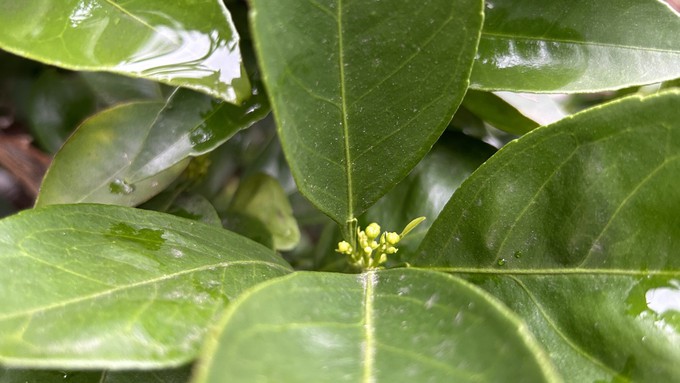
Rain will dampen gardening plans, keep soil wet

It's wet and there's another month of winter ahead of us, yet tiny buds signaling next year's orange crop already are forming on a Washington navel orange tree. Kathy Morrison
February’s rainy streak continues as Northern California is in the midst of another set of atmospheric rivers.
The first storm arrived Saturday (Feb. 17) and will stick around through early Sunday morning, says the National Weather Service. Sacramento can expect about a half inch of rain as most of the moisture will likely end up as Sierra snow. Originating in the mid-Pacific, this is a warm storm; local temperatures will be relatively warm, too, with afternoon highs in the lows 60s and overnight lows in the 50s.
Watch out for falling trees and branches! This rain is expected to be accompanied by gusty winds, up to 45 mph in the Sacramento area. With so much wet soil, trees weakened by drought may be uprooted.
Wait, there’s more! A second stronger storm will quickly follow this first wave. It’s now expected to arrive Sunday afternoon and slowly creep over Northern California for three days. “Definite rain showers and thunderstorms,” reads the weather service forecast from 4 p.m. Sunday through 3 p.m. Tuesday.
There goes the long Presidents Day weekend.
The second storm will make Saturday’s rain seem like sprinkles. NWS estimates that downtown Sacramento will total 3.14 inches from these two storms by Wednesday night.
That moisture will keep soil very wet; to avoid compressing soil don't walk on it or work in the garden. Don’t dig until all this water has a chance to soak in.
When you do get outside, concentrate on damage control.
* Keep storm drains and gutters clear of debris.
* Clean up tree debris knocked down by wind and rain.
* Where did the water flow in your garden? Make notes where revisions are necessary.
* Are any trees leaning? See disturbances in the ground or lawn around their base? Time to call an arborist before the tree topples.
* Dump excess water out of pots.
* Indoors, start peppers, tomatoes and eggplant from seed.
* Lettuce and other greens also can be started indoors from seed.
* Got bare-root plants? Put their roots in a bucket of water until outdoor soil dries out. Or pot them up in 1- or 5-gallon containers. In April, transplant the plant, rootball and all, into the garden.
* Browse garden websites and catalogs. It’s not too late to order for spring and summer.
* Show your indoor plants some love. Dust leaves and mist to refresh.
Comments
0 comments have been posted.Sacramento Digs Gardening to your inbox.
Sites We Like
Garden Checklist for week of July 21
Your garden needs you!
* Keep your vegetable garden watered, mulched and weeded. Water before 8 a.m. to reduce the chance of fungal infection and to conserve moisture.
* Feed vegetable plants bone meal, rock phosphate or other fertilizers high in phosphate to stimulate more blooms and fruiting. (But wait until daily high temperatures drop out of the 100s.)
* Don’t let tomatoes wilt or dry out completely. Give tomatoes a deep watering two to three times a week.
* Harvest vegetables promptly to encourage plants to produce more. Squash especially tends to grow rapidly in hot weather. Keep an eye on zucchini.
* Pinch back chrysanthemums for bushy plants and more flowers in September.
* Remove spent flowers from roses, daylilies and other bloomers as they finish flowering.
* Pinch off blooms from basil so the plant will grow more leaves.
* Cut back lavender after flowering to promote a second bloom.
* It's not too late to add a splash of color. Plant petunias, snapdragons, zinnias and marigolds.
* From seed, plant corn, pumpkins, radishes, winter squash and sunflowers.